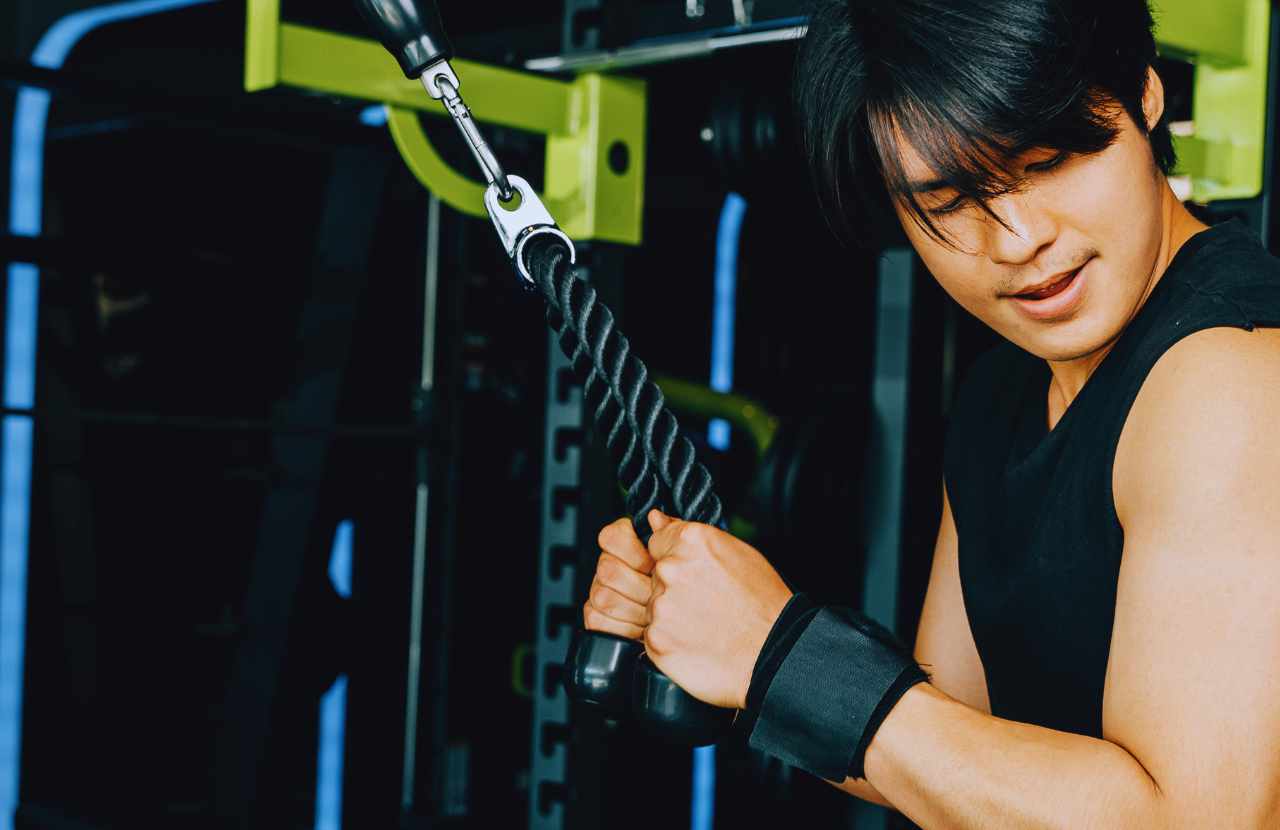Have you ever wondered why you feel your triceps working during lat pulldown exercises? In this blog post, we will explore the specific reasons behind triceps activation during lat pulldowns. We will explore the biomechanics, muscle synergies, and form considerations that contribute to this phenomenon. By understanding these factors, you will gain insights on optimising your lat pulldown workouts and effectively target the intended muscle groups.
Introduction
Lat pulldowns are renowned for their ability to target the muscles of the upper back, particularly the latissimus dorsi. However, many individuals also experience a significant activation in their triceps during this exercise. The triceps are traditionally known as the muscles responsible for extending the elbow joint, so why do we feel them during lat pulldowns? Let’s explore the specific reasons behind this phenomenon.
Understanding the Lat Pulldown Exercise
Before we uncover the reasons behind triceps activation during lat pulldowns, let’s briefly review the mechanics of the exercise. The lat pulldown uses a cable machine with an overhead bar attachment. It involves sitting on a bench or pad, gripping the bar with an overhand grip, and pulling it down towards the upper chest while extending the elbows.
The primary muscle targeted during lat pulldowns is the latissimus dorsi, a large muscle that extends from the upper arm to the lower back. This muscle is responsible for adducting and extending the shoulder joint. Other muscles such as the biceps brachii, rhomboids, and rear deltoids also contribute to the movement.
Triceps Function and Anatomy
To comprehend why we feel our triceps during lat pulldowns, let’s closely examine their function and anatomy. The triceps brachii is a three-headed muscle on the upper arm’s back. Its primary function is elbow extension, but it also assists in shoulder extension and stabilization.
During a lat pulldown, a significant amount of shoulder extension occurs as you pull the bar down towards your chest. This movement necessitates the activation of several muscles, including the triceps. While the primary focus is on the lats, the triceps act as synergistic muscles to stabilise and extend the shoulders.
Biomechanics of Triceps Activation in Lat Pulldowns
Now that we understand the role of the triceps and their interaction with other muscles during lat pulldowns, let’s delve into the biomechanics of triceps activation. When you perform a lat pulldown, your triceps come into play during two key phases of the exercise:
Eccentric Phase
During the eccentric phase of a lat pulldown (when you are lengthening your muscles), your triceps engage to control the descent of the bar. As you release tension and allow the bar to rise back up, your triceps undergo an eccentric contraction to decelerate and control the movement.
Isometric Contraction
As you pull the bar down towards your chest and reach the fully contracted position, your triceps undergo an isometric contraction to stabilize and maintain the position. This is particularly true if you pause momentarily at the bottom of the movement before returning to the starting position.
Form Considerations for Triceps Activation
Several form considerations can influence triceps activation during lat pulldowns. By paying attention to these factors, you can optimize your technique and enhance triceps engagement:
Grip Width
The width of your grip can influence muscle activation. Using a wider grip emphasizes latissimus dorsi involvement, while a narrower grip may increase triceps activation. Experiment with different grip widths to find what feels most effective for your training goals.
Elbow Position
Maintain a slight bend in your elbows throughout the movement rather than fully extending or locking them out. Overextending your elbows can shift emphasis onto your triceps rather than targeting your intended muscle groups.
Scapular Retraction
Focus on retracting your shoulder blades (bringing them towards each other) as you initiate the pull. This helps engage your lats more effectively and reduces reliance on your triceps.
Controlled Tempo
Perform each repetition with a controlled tempo during the exercise’s concentric (pulling) and eccentric (release) phases. Avoid relying solely on momentum, as this can diminish muscle activation and limit results.
Mind-Muscle Connection
Concentrate on engaging your lats while consciously keeping your triceps relaxed during lat pulldowns. Developing a strong mind-muscle connection can help shift emphasis away from your triceps and onto your desired muscle groups.
Modifications for Triceps Emphasis
If you specifically want to emphasize triceps activation during lat pulldowns, consider implementing these modifications:
Close-Grip Lat Pulldowns
Instead of using an overhand grip with a wide width, try using an underhand grip with a closer width. This hand position places more emphasis on both the biceps and triceps, intensifying their activation.
V-Bar Pulldowns
Switching to a V-bar attachment can also increase triceps involvement during lat pulldowns. The V-bar allows for a neutral grip position, which recruits more of the triceps brachii.
Final Words
Feeling your triceps working during lat pulldowns is not uncommon and can be attributed to their role as synergistic muscles in shoulder extension and stabilization. By understanding the biomechanics behind triceps activation, implementing proper form and technique, and making specific modifications if desired, you can optimize your lat pulldown workouts to effectively target your intended muscle groups. Remember to focus on mind-muscle connection and experiment with different variations to find what works best for you. With these insights in mind, you can take your lat pulldowns to new heights!

